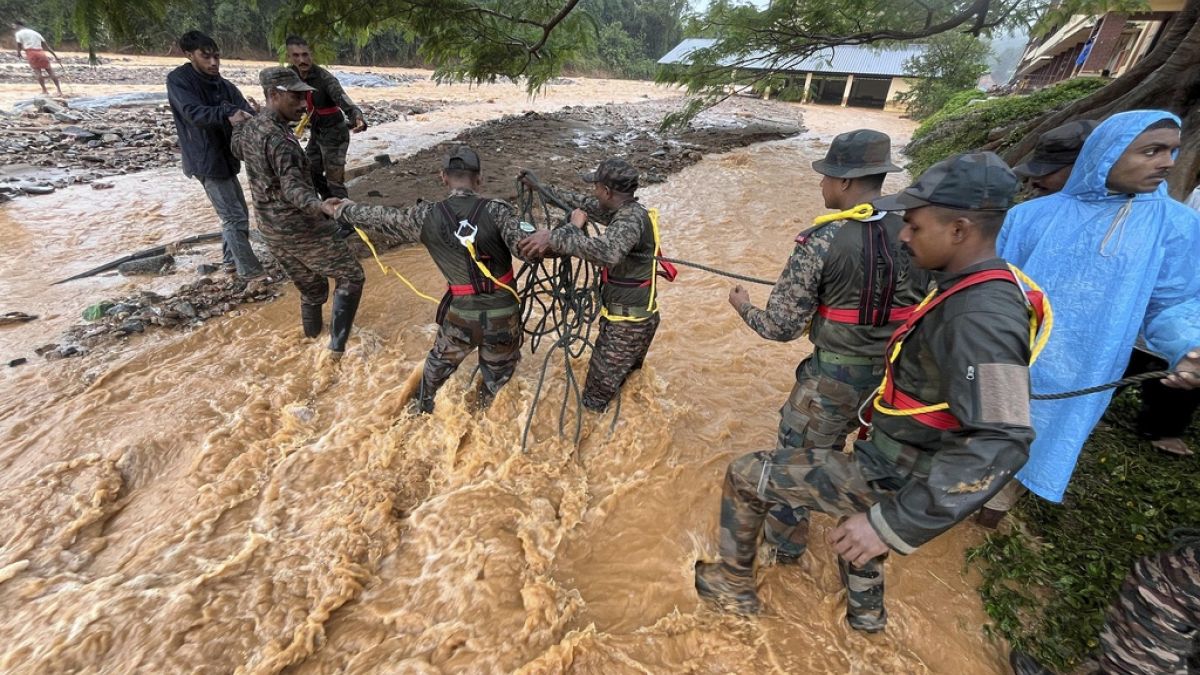At least 63 people have died and hundreds are believed to be buried following landslides caused by heavy flooding in southern India. The affected villages are located in a hilly region of the Wayanad district, in the state of Kerala. Rescuers are facing challenges due to blocked roads and unstable terrain, but they are working tirelessly to extract the missing individuals from the debris. Helicopters have been mobilised to aid in rescue efforts, and the Indian army has been called in to build a temporary bridge after landslides destroyed a main crossing in the affected area.
Images from television stations on the ground show rescue workers navigating through mud and over uprooted trees to reach those who have been stranded. Vehicles swept off the roads are seen stuck in a swollen river, adding to the difficulties faced by the rescuers. The state Health Minister, Veena George, expressed that every effort is being made to rescue the people affected by the landslides. In the meantime, Kerala has been put on alert by India’s weather department as incessant rains continue to lash the state, disrupting daily life and causing authorities to close schools in some areas.
Kerala is no stranger to heavy rains, flooding, and landslides, as seen in the devastating floods of 2018 that claimed nearly 500 lives. Indian Prime Minister Narendra Modi has offered his condolences to the relatives of the deceased and extended his support to the injured. He expressed his sympathy for those affected by the landslides in Wayanad and offered prayers for the injured individuals. The monsoon season in India, which typically runs from June to September, brings most of South Asia’s annual rainfall, crucial for rain-fed crops planted during this period. However, the monsoons also often result in extensive damage, exacerbated by the impact of climate change according to scientists.
The severity and frequency of the impact of the monsoons are increasing due to climate change, leading to more destructive events such as the recent landslides in southern India. It is crucial for authorities and communities in vulnerable areas to be prepared for these extreme weather events and to have measures in place to mitigate the risks. The mobilization of resources such as helicopters and the Indian army in response to the landslides in Kerala demonstrates the importance of swift and coordinated rescue efforts during such crises. As the rescue operations continue and the death toll rises, it is a stark reminder of the urgent need for climate action to address the underlying causes of these natural disasters and protect vulnerable communities.










